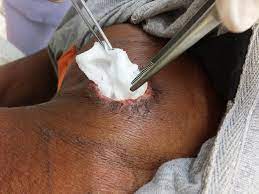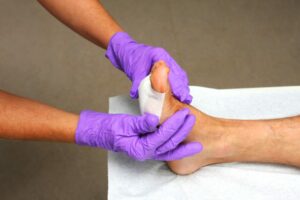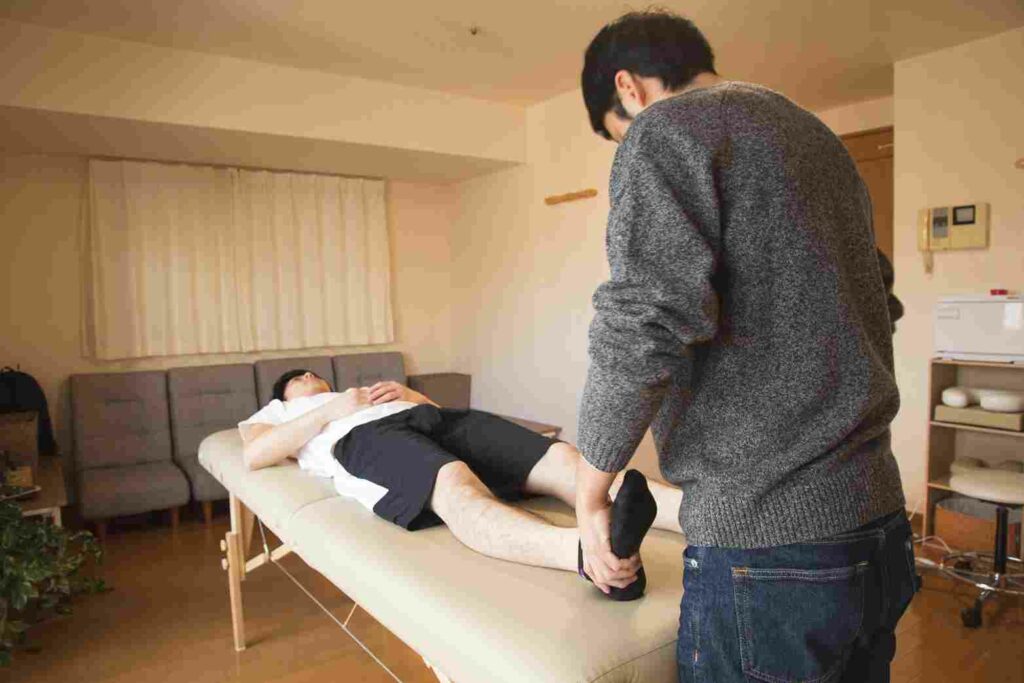Did you know that physical therapy can be used to treat wounds? It is one of the most effective methods of wound care. There are many benefits to using physical therapy for wound care, including accelerated healing times and reduced scarring. In this blog post, we will discuss the benefits of physical therapy for wound care and how it can help you or a loved one recover from an injury or surgery more quickly!
Contents
Understanding Physical Therapy For Wound Care

If you have a wound that isn’t healing properly, your doctor may recommend physical therapy. Physical therapy for wound care can help speed up the healing process and also reduce the risk of infection.
The five Principles for wound management are as follows: offloading, optimizing perfusion, preventing biofilm formation, removing devitalized tissue, and using appropriate dressings.
Does Physical Therapy Help In Wound care?
Yes, physical therapy can help in the healing process of many types of wounds. How? By improving the blood flow and circulation to the area, helps bring more oxygen and nutrients to the wound site. This can speed up the healing process.
In addition, physical therapy can help reduce scarring and improve the appearance of the wound site. This is done by helping to break down and remodel collagen fibers in the skin.
Finally, physical therapy can help relieve pain associated with wounds. This is done by decreasing inflammation and improving nerve function.
If you have a wound that is not healing properly, or if you are having trouble managing the pain, you may want to consider physical therapy. A physical therapist can help you create a plan to improve your healing and reduce your pain.
What Type Of Physical Therapy Is used For Wound Care?

Various types of therapy can be used for wound care. They are as follows:
Electrotherapy
This type of therapy uses electrical stimulation to promote healing. It is often used for chronic wounds or wounds that are not healing properly. For example, electrical stimulation can help to increase blood flow and reduce inflammation.
Massage
Massage can help to increase blood flow and reduce inflammation. It can also help to relax the muscles and reduce pain. For example, a recent study found that massage therapy was effective in reducing pain and improving function in people with chronic neck pain.
Aquatic therapy
Aquatic therapy, or water therapy, is another type of physical therapy that can be very beneficial for wound healing. The water can help to reduce swelling and inflammation while also providing support and resistance for exercises.
Ultrasound
Ultrasound therapy uses sound waves to promote healing. It is often used for chronic wounds or wounds that are not healing properly. For example, ultrasound can help to increase blood flow
Light therapy
This type of therapy uses light to promote healing. It is often used for superficial wounds or burns. For example, a physical therapist may use a low-power laser to stimulate collagen production and speed up wound healing.
Manual therapy
This type of therapy uses manual techniques to promote healing. It is often used for chronic pain or injuries that are not healing properly they may use stretching and mobilizations to reduce scar tissue.
Therapeutic exercise
This type of therapy uses exercises to promote healing. It is often used for chronic pain or injuries that are not healing properly. It includes range-of-motion exercises, stretching, and strengthening. This can help increase blood flow to the area, reduce inflammation, and speed up healing. Exercise can increase blood flow and help to reduce swelling. It can also help to speed up the healing process by promoting the growth of new tissue.
How Does Physical Therapy Help Wound Care?
Physical therapy can help improve blood flow to the area, which helps deliver more oxygen and nutrients to the area and promote healing. The increased blood flow also helps remove toxins from the area.
Physical therapy can also help reduce swelling and inflammation, which can help reduce pain and improve the range of motion.
Physical therapy will help as follows:
Improved blood flow to the area
Increased blood flow helps deliver more oxygen and nutrients to the area, which can promote healing. For instance, one study found that compared to standard care, people who underwent physical therapy for their chronic wounds had a significantly higher rate of healing. This helps to bring more oxygen and nutrients to the area, which can speed up healing.
Reduced swelling and inflammation
This can help reduce pain and improve the range of motion. For instance, if you have a sprained ankle, your physical therapist will use techniques to reduce the swelling in your ankle joint. For example, they may apply ice, use electrical stimulation, or massage the area.
Reduced scarring
Physical therapy can help minimize the appearance of scars by breaking up scar tissue and improving the skin’s elasticity. For example, massage therapy and stretching exercises can both help improve the appearance of scars.
Reduced pain
Physical therapy can also help reduce the pain associated with wounds. This is because when the body heals, it produces a substance called collagen, which can help repair tissue damage. However, collagen can also cause pain and inflammation. By breaking up scar tissue and improving circulation, physical therapy can help reduce pain and inflammation.
Improved range of motion
Another benefit of physical therapy for wound care is improved range of motion. This is because when the body heals, it produces a substance called collagen, which can help repair tissue damage. However, collagen can also cause stiffness and reduced range of motion. By breaking up scar tissue and improving circulation, physical therapy can help improve the range of motion.
Improved function
Physical therapy can also help improve the function of the affected area. This is because when the body heals, it produces a substance called collagen, which can help repair tissue damage. However, collagen can also cause stiffness and reduced range of motion.
Prevent infection
Wounds that are properly cared for are less likely to become infected. Physical therapy can help clean the wound and keep it free from bacteria. For instance, physiotherapy might be used to irrigate the wound with sterile water or saline solution. Infection is a common complication of wounds, and it can delay healing or even lead to more serious health problems.
Faster healing
Physical therapy can also help speed up the healing process by improving circulation and breaking up scar tissue. For instance, massaging the affected area can help improve circulation, while exercises that stretch the muscles and tendons can help break up scar tissue
Promote healing
Physical therapy can also help promote healing by reducing inflammation and improving blood flow to the area. This helps bring more oxygen and nutrients to the wound, which can speed up healing. For instance, electrical stimulation, infrared light therapy, and massage therapy can all help improve blood flow.
If you are seeking treatment for a wound, be sure to ask your doctor if physical therapy could help you heal more quickly and reduce your pain.
Conclusion
It may be concluded that physical therapy wound care is an important and beneficial treatment for patients with wounds. The use of physical therapy can help to improve the healing process, reduce the risk of infection, and promote the formation of new tissue. In addition, physical therapy can also help to relieve pain and improve the range of motion in patients with wounds. Overall, physical therapy wound care is an effective treatment option for patients with wounds.
Physical Therapy help patients recover from pain. If you’re experiencing Back pain, Shoulder pain, Knee pain, Neck pain, Elbow pain, Hip pain, or Arthritis pain, a physical therapist at MantraCare can help: Book a physiotherapy session.


